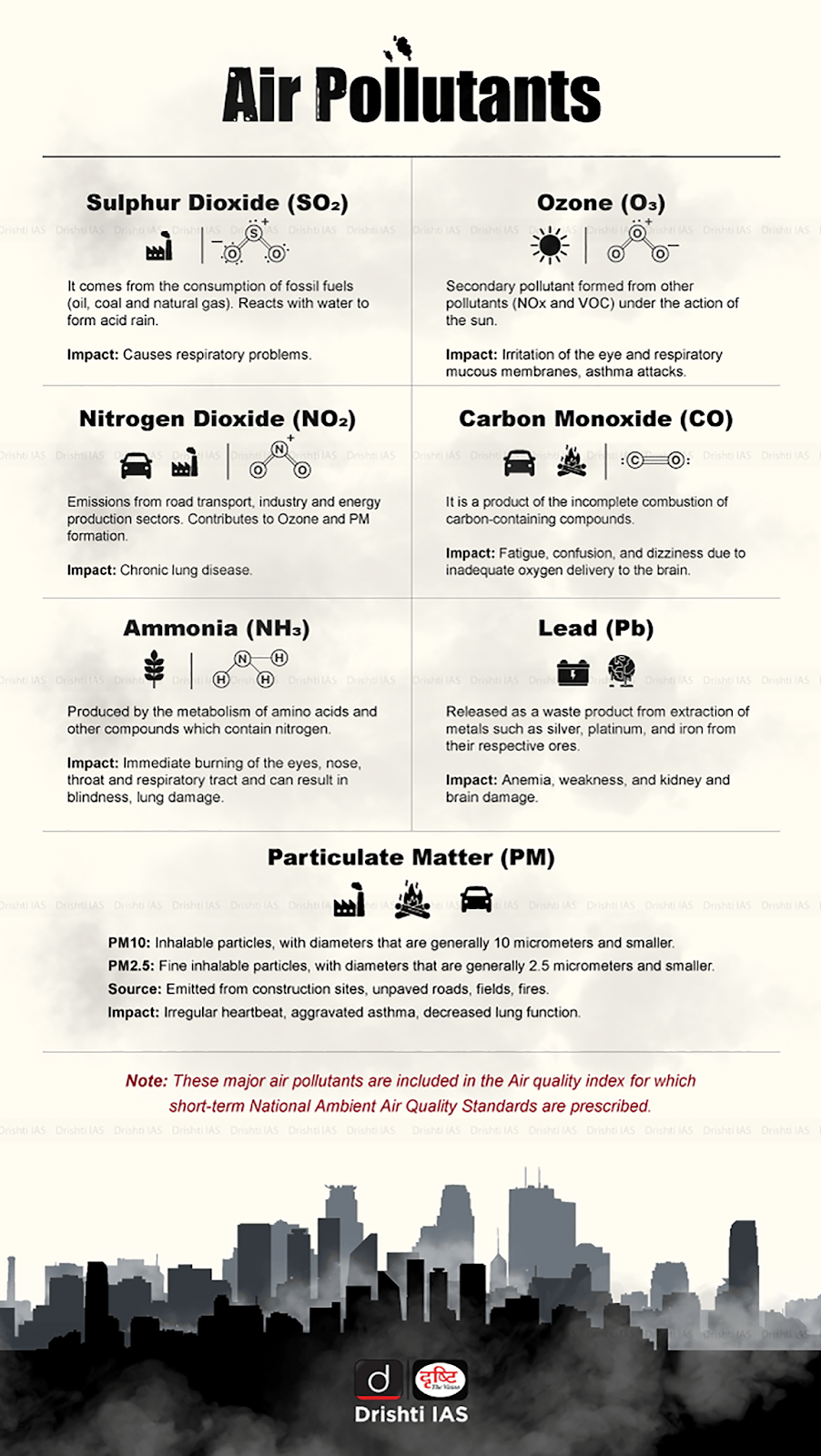Role of Dust Suppressants in Mitigating Air Pollution | 25 Oct 2023
Why in News?
Recently, Dust suppressants have gained significant attention as a potential solution to reduce dust-related pollution especially in cities like Delhi where air pollution remains a critical concern.
What are Dust Suppressants?
- About:
- Dust suppressants are typically composed of calcium or magnesium salts, which are mixed with water and then sprayed on roads.
- This mixture effectively suppresses dust, providing longer-lasting relief from particulate matter in the air.
- Efficacy:
- The Central Pollution Control Board (CPCB) study indicated that the application of dust suppressants, when mixed with water, is more effective at controlling pollution than traditional methods, such as water spraying.
- The study observed up to a 30% reduction in dust concentration (including PM10, PM2.5, and PM1) for construction sites and roads following the use of dust suppressants.
- In 2019, the CPCB recommended the use of dust suppressants on excavated earth surfaces, construction and demolition waste piles, and access roads in construction areas.
- The Central Pollution Control Board (CPCB) study indicated that the application of dust suppressants, when mixed with water, is more effective at controlling pollution than traditional methods, such as water spraying.
Note: Air pollution is the presence of harmful substances in the Earth's atmosphere, originating from natural and human-made sources, which adversely affect air quality, human health, and the overall environment.
What are the Other Recent Technological Interventions to Curb Air Pollution?
- Ionisation Technology for Pollution Reduction: This technology aims to neutralize pollutants through ionization processes, enhancing air quality in specific areas.
- Wind Augmentation and Air Purifying Unit (WAYU): It can be positioned in an industrial complex, residential complexes, and schools in the vicinity of traffic road intersection/divider to tackle air pollution.
- This device works on two principles i.e. Wind generation for dilution of air pollutants and active pollutants removal.
- Medium/Large-Scale Smog Towers: These towers are substantial air purifiers targeting the reduction of particulate matter and pollutants on a larger scale.
- Indigenous Photonic System for Air Quality Monitoring: The Department of Science and Technology (DST) is developing an indigenous photonic system for real-time remote air quality monitoring, improving data accuracy for informed pollution management.
What are the Government Initiatives to Combat Air Pollution?
UPSC Civil Services Examination Previous Year Question (PYQ)
Prelims
Q. In the cities of our country, which among the following atmospheric gases are normally considered in calculating the value of the Air Quality Index? (2016)
- Carbon dioxide
- Carbon monoxide
- Nitrogen dioxide
- Sulfur dioxide
- Methane
Select the correct answer using the code given below:
(a) 1, 2 and 3 only
(b) 2, 3 and 4 only
(c) 1, 4 and 5 only
(d) 1, 2, 3, 4 and 5
Ans: (b)
Mains
Q. Describe the key points of the revised Global Air Quality Guidelines (AQGs) recently released by the World Health Organisation (WHO). How are these different from its last update in 2005? What changes in India’s National Clean Air Programme are required to achieve revised standards? (2021)

